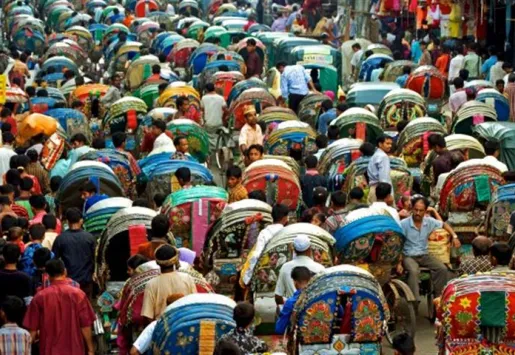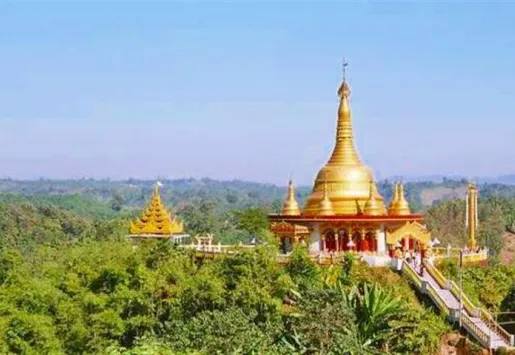- In 2008 Bangladesh drew over 400,000 tourists compared to 2007 when there were 200,000 visitors.
- The prime tourist attractions in Bangladesh include the Sundarbans (the world's largest natural mangrove forest), Cox's Bazaar and the capital city Dhaka.
- Bangladesh has three sites inscribed on the UNESCO World Heritage List: Historic Mosque City of Bagerhat, Ruins of the Buddhist Vihara at Paharpur, and The Sundarbans (1997).
Bangladesh is located in the north-eastern part of South Asia. The majestic Himalayas stand some distance to the north, while in the south lays the Bay of Bengal. There is West Bengal border on the west and in the east lie the hilly and forested regions of Tripura, Mizoram (India) and Myanmar. These picturesque geographical boundaries frame a low lying plain of about 1,47,570 square kilometer criss-crossed by innumerable rivers and streams. Mighty rivers are the Padma (Ganges), the Brahmaputra (Jamuna) & the Meghna and the Karnafuli.
Bangladesh offers many tourist attractions, including archaeological sites, historical mosques and monuments, longest natural beach in the world, picturesque landscape, hill forests and wildlife, rolling tea gardens and tribes. As much of the country has been relatively untouched by modern technology and development, tourists find the rich flora and fauna and colorful tribal life very enchanting. Each part of the country offers distinctly different topography, flavors and food. It is home to the Royal Bengal Tigers, freshwater pink dolphins, historical temples made of red earth.
{%C3,4%}
Some of the better-known tourist attractions are: Srimangal, where miles of tea gardens are located, Mainamati, Mahasthangarh, Paharpur for archaeology, Rangamati, Kaptai and Cox's Bazar for sightseeing, and the Sundarbans for wildlife and the greatest mangrove forest of the world, as well as Foy's Lake for scenic beauty.
Photos: TR, Flickr











